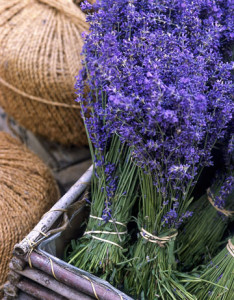Linalool is not related to lanolin, as I have found some people mistakenly believe.
It comes from plants. Over 200 species of plants produce linalool, mainly from the families of mints & other scented herbs, citrus fruits, and birch trees.
On the label it is otherwise known as: β-linalool, linalyl alcohol, linaloyl oxide, p-linalool, allo-ocimenol, and 2,6-dimethyl-2,7-octadien-6-ol
What is it? A terpene alcohol used as a natural source of scent in perfumed personal care products. Used in “natural” care products as well as mainstream ones. It is found most commonly in personal care products that are scented like: lavender, spearmint, peppermint, coriander, bergamot, ylang ylang, and geranium.
What does this ingredient claim to do/what is it known for?- Linalool is one of the active components in botanicals like lavender and bergamot that *contribute to stress relief, and the reason that you will find botanicals that contain linalool in many products that are geared towards relaxation, stress relief, sleep, or mood boosting. In the pest control industry, it is used as an insecticide against fruit flies, fleas, and cockroaches!
What natural and/or cruelty free products have I tried that contain this ingredient? – The list is a long one. Linalool can be found in EVERYTHING from body wash to bubble bath, hairspray to bug spray, either listed as linalool by itself or contained in the natural extract. Some of my favorite products that include linalool containing botanicals are: Dr. Bronner’s Magic Soaps Lavender Liquid Soap, Alteya Organics Organic Lavender Water (I use this to soothe the skin after a brow shaping), and Alaffia Shea & Virgin Coconut Enriching Hair Lotion with Orange & Geranium,
Conclusion: Bunk or Buy? Safe or Avoid? – Safe, generally, but if you have sensitive skin or are allergic to certain types of botanicals, you may want to avoid products that contain linalool or other plant oils that come from mint or citrus.
*Akio Nakamura, Satoshi Fujiwara, Ichiro Matsumoto and Keiko Abe. Stress Repression in Restrained Rats by (R)-(−)-Linalool Inhalation and Gene Expression Profiling of Their Whole Blood Cells. J. Agric. Food Chem., 2009, 57 (12), pp 5480–5485.
